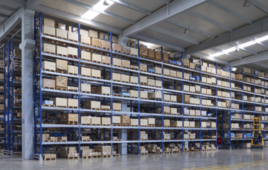Article courtesy of UC Components

Vacuum chambers must remain clean and free of contaminants and volatile materials that could lead to contamination of the entire system — and this includes the fasteners used in its assembly.
Manufacturers in a range of industries rely on vacuum chambers for different phases of product development, testing, and final manufacturing. Vacuum chambers work by removing air and gases from a vessel or chamber through a vacuum pump — creating a space (or vacuum) that’s completely devoid of matter.
These chambers must remain clean and free of contaminants and volatile materials that would disrupt the entire system. Cleanliness is incredibly important. Anything that exists within a vacuum system that hurts or inhibits its proper function is a contaminant and must be addressed. This can include the fasteners.
In fact, O-rings are most often the primary source of contamination in any vacuum system. An unprocessed O-ring contains a great deal of water, which is chemically formed during the manufacturing process.
Additionally, the materials used for any of the fasteners — including during post-fabrication treatments — are vital, particularly if the fastener will be exposed to corrosive elements, extreme temperatures, extreme pressure, or high levels of physical strain.
High and ultra-high vacuum applications require parts that are free from volatile materials that would lead to contamination of the vacuum system.
Types of contamination issues include:
• Imbedded and surface water
• Surface particulate
• Volatile organics
• Hydrocarbons
• And other types of debris
All of these can lead to virtual leaks, outgassing, and other catastrophic issues within a sealed, vacuum system. Similar problems can also occur if using improper or misspecified fasteners.
What are the sources of vacuum contamination from fasteners?
Fasteners can lead to several contamination issues due to:
• The materials they’re made from
• Secondary treatments, such as coatings or use of lubricants
• Improper cleaning and/or incorrect packaging of the fastener(s)
• Mishandling, such as carrying fastener(s) by hand after cleaning
• Using the wrong type of fastener in a blind-tapped hole
• And others
Surface contamination in a vacuum system can come from a variety of sources — starting with the original metal the fasteners were made from. This includes any wire or lubricants added to the surface, machining, tooling for drawing, rolling, and heading.
For example, the material that the fasteners are manufactured from, or coated with, can potentially release lightweight molecules that can interfere with the vacuum process. This is also true for materials that are not normally considered absorbent, such as metals and glass.
Mild steel parts are often chrome-plated or black-oxide-coated to prevent rusting. These types of rust or corrosion-preventing methods should be carefully vetted for their appropriateness for vacuum service.

Vented screws feature a hollow core, which rapidly eliminates trapped air volumes from the base of the screw during pump-down when used within a vacuum system, ensuring a clean environment. Learn more in this video.
Particles are another, more direct form of surface contamination and should be factored in when choosing the type, coating, and use specifications. Plastics, elastomers, porous metals, ceramics, and lubricants are some of the worst sources of material outgassing. Vapor pressure and the rate of chemical reactions at higher temperatures can also cause outgassing.
Hydrocarbon-based lubricants can also be a major source of contamination and are difficult to remove. Secondary hydrocarbon-based lubricants (such as oils and grease) can be major and destructive forms of contamination in vacuum systems because they have a low vapor pressure and will spread throughout a tool quickly, requiring lengthy and costly cleaning to remove properly.
All types of packaging can also impart contamination to the parts contained within. Even handling a properly cleaned part with bare hands can impart skin oils that will also outgas and drag a system down, emphasizing the need for gloved hands and the proper handling of a cleaned fastener.
How to address contamination problems?
Vented screws (also known as vacuum, ventilation, or hollow screws) and/or vacuum baking are two methods that can address potential contamination issues.
A vented screw features a hollow core, which is specifically designed to allow the release of gases, contaminants, and pressure through the fastener. These types of screws are widely used within vacuum systems and allow for the quick evacuation of trapped pockets of air and surface contaminants from blind-tapped holes.
Vacuum baking provides the ultimate level of contamination control for fasteners in extremely critical process environments. The vacuum baking cycle can be monitored and certified with a residual gas analyzer, which provides control and monitoring to ensure a contaminate-free product.
Overall, careful selection of the fasteners, as well as proper cleaning, packaging, and handling of fasteners after cleaning, will ultimately offer the best product for your vacuum system.







Tell Us What You Think!